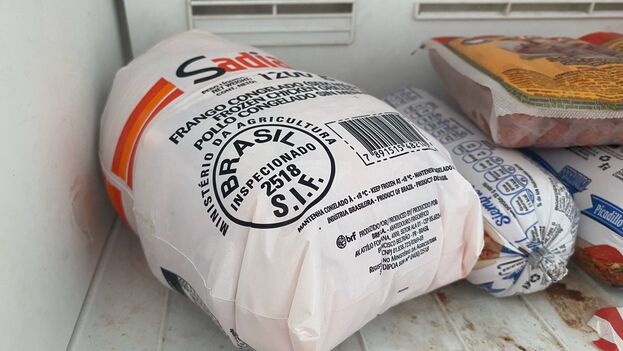
![]() 14ymedio, Havana | A report published this Tuesday by three United Nations agencies concludes that Cuba is the second country in Latin America and the Caribbean with the highest deficit and per capita dependence on imports of agricultural products, only surpassed by Panama.
14ymedio, Havana | A report published this Tuesday by three United Nations agencies concludes that Cuba is the second country in Latin America and the Caribbean with the highest deficit and per capita dependence on imports of agricultural products, only surpassed by Panama.
The report, prepared by the Economic Commission for Latin America and the Caribbean (Cepal) together with the Food and Agriculture Organization of the United Nations (FAO) and the World Food Program (WFP), explores how the Russian invasion of Ukraine compromises the daily livelihood of millions of Latin American families, including Cuban ones, who are also suffering from the island’s deep economic crisis.
It is no secret to anyone that the country presents notable deficiencies in its agricultural and food production, exacerbated by the scarcity of fuels and key inputs. The low availability of food and basic necessities are part of the causes that drive Cubans to emigrate, and have also led to an increase in the rates of violence on the island.
Between 2018 and 2020, Cuba suffered a deficit in imports of agricultural products that amounted to 1.632 billion dollars, buying more than it exported. The greatest imbalance is observed in food — with the exception of fish — with a negative balance of 1.635 billion dollars.
The cereal deficit was 668 million dollars, while in corn and wheat it was 181 million. The little that goes into fruits and vegetables also marks a negative balance of 109 million dollars in imports and another 104 million in vegetable oils. In dairy, the imbalance was 204 million, while the figure for meat is 446 million.
Venezuela, which is also experiencing a deep economic and migration crisis, had a deficit in imports of agricultural products of 3.359 billion dollars. Panama, which claims to be the largest economy in Central America, also had a deficit of 1.988 billion dollars.
Although the countries of Latin America and the Caribbean do not depend directly on imports of cereals, corn and vegetable oils from Russia and Ukraine, the report notes, food prices are affected by world trade restrictions. The conflict directly impacts the value of fertilizers, since in 2021 the Russian Federation was the world’s largest exporter of nitrogens, the second of potassium and the third of phosphate.
The UN agencies point out that the world economy has not had a truce in the last 15 years with successive crises, among which the financial crisis of 2008, the trade tensions between China and the United States exacerbated in 2019 and the covid-19 pandemic in 2020 stand out, followed by the breakdown of logistics chains, inflation and the Russian invasion of Ukraine.
As a consequence, ECLAC forecasts that the economy of Latin America and the Caribbean will slow down to 1.4% in 2023 after experiencing 3.2% this year. In its latest update of the outlook, published last October, the agency reduced its projection for Cuba from the 3% it had forecast in August to 2% for 2022. The scenario is much less optimistic for 2023, with just 1.8%.
At the moment, the FAO says in the report, the biggest concern is that inflation puts at risk access to a healthy diet for households with lower incomes, in a context in which hunger increased by 30% between 2019 and 2021 as consequence of the pandemic. The World Food Program complements this data with an analysis, carried out in June 2022, which reveals that food insecurity is among the main causes for leaving one’s country of birth.
____________
COLLABORATE WITH OUR WORK: The 14ymedio team is committed to practicing serious journalism that reflects Cuba’s reality in all its depth. Thank you for joining us on this long journey. We invite you to continue supporting us by becoming a member of 14ymedio now. Together we can continue transforming journalism in Cuba.
